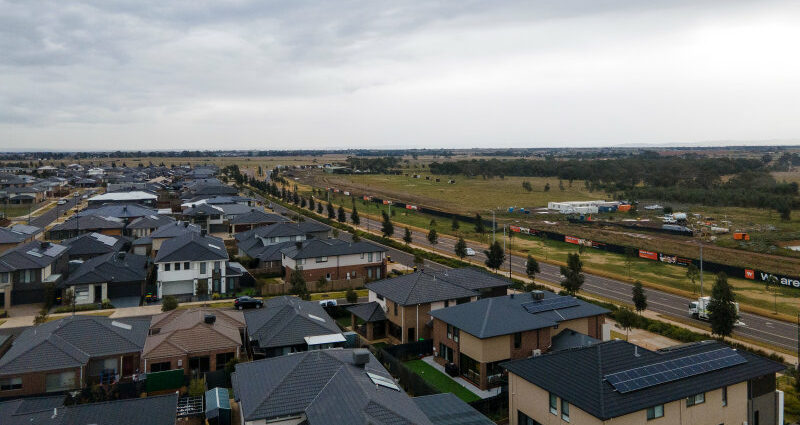If, as seems likely, the combined might of the advanced economies’ central banks pushes the world into recession, the biggest risk isn’t that they’ll drag us down too, but that our Reserve Bank will raise our own interest rates too far.
That’s the message to us – and everyone else – from the International Monetary Fund’s repeated warnings about the unexpected consequences of “synchronised tighten” by the big economies – America, Europe and, in its own way, China, all jamming on the brakes at the same time.
Dark economic clouds might not be headed for Australia but there is real risk the Reserve Bank could damage the economy by lifting rates too high. Credit:Eddie Jim
Synchronised macro-policy shifts are a relatively new problem in our more globalised world economy. Until the global financial crisis of 2008, world recessions tended to roll from one country to the next. Since then, everyone tends to start contracting – or stimulating – at the same time.
When you were stimulating while your trading partners weren’t, much of your stimulus would “leak” to their economies, via your higher imports. But, as we learnt in the fight to counter the Great Recession, when everyone’s stimulating together, your leakage to them is offset by their leakage to you, thus making your stimulus stronger than you were expecting.
The fund’s warning is that we’re now about to learn that the same thing happens in reverse when everyone’s hitting the brakes – budgetary as well as monetary – together. Synchronisation will make your efforts to restrain demand (spending on goods and services) more potent than you were expecting.
So the fund’s message to us is: when you’re judging how high interest rates have to go to get inflation heading back down to the target, err on of side to doing too little.
But there are four other factors saying the Reserve should be wary of pushing rates higher. The first is Treasurer Jim Chalmers’ confirmation in last week’s budget that the “stance” of his fiscal policy has also switched from expansionary to restrictive, and so is now adding to the restraint coming from tighter monetary policy.
Chalmers has cut back the Coalition’s spending programs to make room for Labor’s new spending plans, while “banking” the temporary surge in tax revenue arising from the war-caused jump in world energy prices, and the success of the Coalition’s efforts to return us to full employment.
As a result, the budget deficit has fallen from a peak of $134 billion (equivalent to 6.5 per cent of gross domestic product) in 2020-21, to $32 billion (1.4 per cent) in the year to this June. The present financial year should see that progress largely retained, with the deficit rising only a little.
What’s more, the government’s already acting on its intention to force our greedy gas producers to raise their prices by a lot less than has been assumed in the budget’s inflation forecasts.
Second, the Reserve’s efforts to reduce aggregate (total) demand by using the higher cost of borrowing to reduce domestic demand, will be added to by the other central banks’ efforts to reduce our “net external demand” (exports minus imports).
What’s more, the expected further big fall in house prices will help reduce domestic demand by making home owners feel a lot less well-off than they were (the “wealth effect”).
Third – and this is a big point – the restrictive effect of the Reserve’s higher interest rates will be massively reinforced by the “cost-of-living squeeze” (aka the huge fall in real wages). Comparing the wage price index with the consumer price index, real wages fell by 2 per cent over the year to June 2021, and by an unbelievable 3.5 per cent to June this year.
Now the budget’s predicting a further fall of 2 per cent to June next year, with only the tiniest gain by June 2024.
This is an unprecedented blow to households’ income. It just about guarantees an imminent return to weak consumer spending. And it’s a much bigger blow than the big advanced economies have suffered, suggesting our central bank should be going easier on rate rises than theirs.
The final factor saying the Reserve should be wary of pushing rates higher is “lags”. As top international economist Olivier Blanchard reminded us in a recent Twitter thread, monetary policy affects the inflation rate with a variable delay of maybe six to 18 months.
This says you should stop tightening about a year before you see any hard evidence that inflation has peaked and started falling. Wait for that evidence, and you’re certain to have hit the economy to hard, causing the recession we didn’t have to have.
But to stop tightening before the money market know-alls think you should takes great courage.
The Business Briefing newsletter delivers major stories, exclusive coverage and expert opinion. Sign up to get it every weekday morning.
Most Viewed in Business
From our partners
Source: Read Full Article


